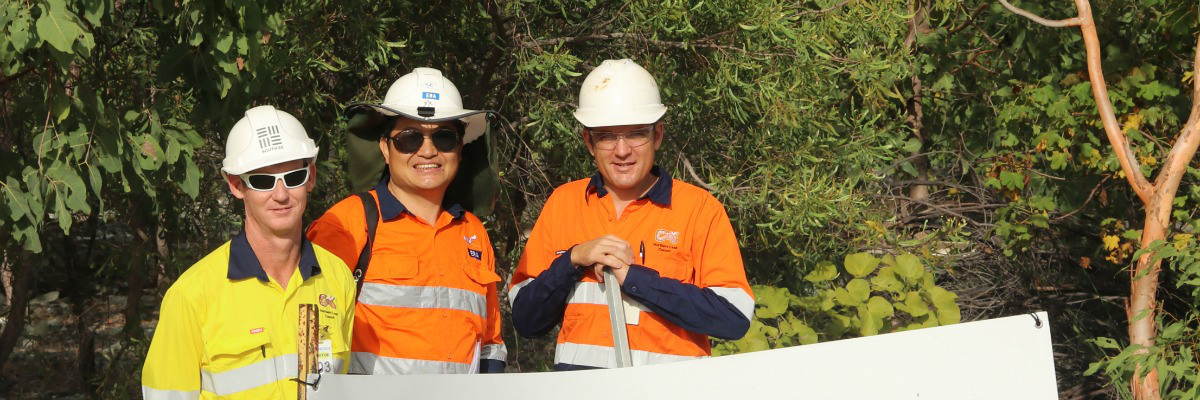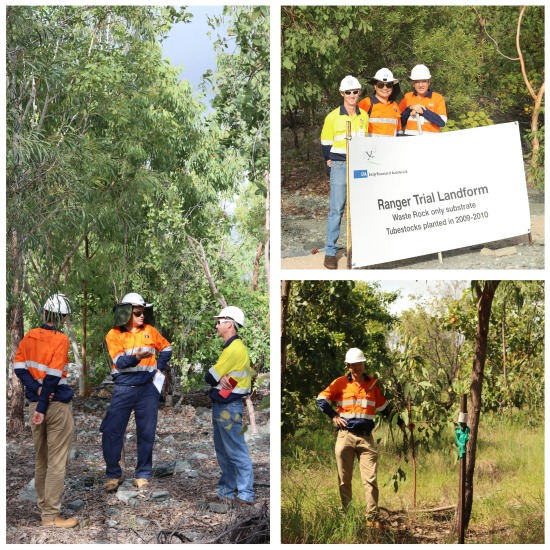NLC observes impressive trial landform results

On 22 February 2018, Energy Resources of Australia (ERA) hosted a visit by Dr Chris Brady and Adam Thompson from the Northern Land Council.
Dr Brady and Mr Thompson met with ERA’s Principal Advisor Rehabilitation and Ecology Dr Ping Lu to discuss the revegetation progress of the Ranger mine trial landform and view first-hand the impressive growth of native species on the site.
This was Dr Brady’s first visit to the trial landform and he was impressed with the good growth of the trees on the waste rock only substrate, one of four different substrates being trialled.

The trial landform was established almost ten years ago and is an on-site test of different approaches to planting trees and seeds to provide ERA with valuable information about how to best undertake larger scale rehabilitation works progressively up to the projected end of life of Ranger Mine in 2021 and completion of rehabilitation by 2026 under the conditions set out in the Ranger Authorisation.
The trial landform allows for real-world conditions like seasonal extreme weather to be tested as well identifying the best soil and rock combinations to ensure optimal growth.
The best surviving species on the TLF have included Eucalyptus tectifica, Eucalyptus tintinnans, and Acacia mimula.
Overtime natural regrowth has occurred on the landform and a variety of local fauna now call it home including a flock of threatened Eastern Partrigde Pigeon. As well as the partridge pigeons, Yellow orioles, Olive-backed Oriole, Varied Triller (juvenile), White winged Triller, Restless flycatcher and little Pied Cormorant have been spotted feeding on insects/caterpillars as well as nectars of the bright flowers of native trees such as Eucalyptus. In addition to the presence of birdlife and insects, snakes, lizards, wallabies, dingoes, frogs, ants and fungi are thriving amongst the trees on the site.
